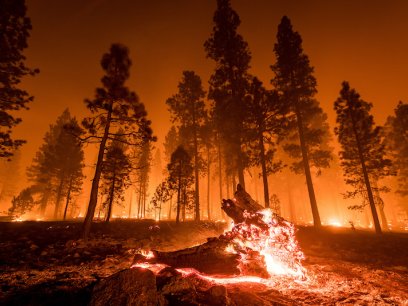
Did You Know?
- Asthma is the leading chronic disease in children
- 7.5% of children in the US have asthma, 2.3% are Black or of Hispanic origin.
- Dampness and mold in US homes are linked to approximately 4.6 million cases of worsened asthma.
- The expected economic of burden of Asthma over the next 20 years is US$300 Billion.
The blanket of heat trapping gasses associated with a changing climate disrupts many of the interconnected systems in our environment, including the air we breathe. Increased temperatures, altered precipitation patterns, increased indoor molds, and greenhouse gases affect human health, in particular asthma development and exacerbation, through increasing pollen concentrations, extending pollen seasons, and reducing air quality.
Allergies and Asthma
Shifts in temperature and precipitation patterns alter the production, allergenicity, distribution, and timing of airborne allergens which contribute to the occurrence of asthma episodes. Airborne allergens include tree, grass, and ragweed pollen; indoor and outdoor molds; and animal dander, dust mites, and cockroaches. Asthma cases associated with allergies tend to vary depending on geography and demographics, however, the very young, those with compromised immune systems, and the medically uninsured bear the brunt.
Decreased Air Quality and Asthma
A changing climate makes common air pollutants more widespread and more severe through increased extreme weather events and concentrations of greenhouse gases. An increase in extreme temperatures and precipitation can lead to increased humidity and mold growth indoors, and more frequent droughts and wildfires can result in exposure to more smoke, dust, volatile organic compounds, carbon monoxide, and nitrogen dioxide.
Greenhouse gases that contribute to a changing climate also have the potential to increase ozone levels and concentrations of fine particulate matter (PM2.5) which are associated with the development and worsening of asthma. Populations exposed to ozone air pollution are at greater risk of suffering from asthma attacks and PM2.5 is associated with serious chronic and acute health effects. Studies have found that changes in both PM2.5 and ozone levels due to climate change will be drivers of air quality-related health effects in the future.
What You Can Do
- Check the air quality forecast. If air quality is poor and your child suffers from asthma, consider rescheduling sports games and other outdoor activities for another day. If you do go outside, aim for early morning or evening hours, when air pollution levels and pollen levels are likely to be lower.
- Learn more about how to reduce indoor pollution sources, improve ventilation, and lower the concentrations of indoor air pollutants in EPA's Improving Indoor Air Quality.
- If you are a health provider, you can take NEEF's free
"Environmental Management of Pediatric Asthma: Guidelines for Healthcare Providers" certification course.
Learn More
- Explore the climate change and health report by US Global Change Research Program.
- Find out more statistics on childhood asthma from the CDC.
Sources
- D'Amato, G, Chongâ€Neto, HJ, Monge Ortega, OP, et al. The effects of climate change on respiratory allergy and asthma induced by pollen and mold allergens. Allergy. 2020; 75: 2219– 2228. https://doi.org/10.1111/all.14476
- EPA. 2017. “Climate Impacts on Human Health.” Accessed April 25, 2018. https://19january2017snapshot.epa.gov/climate-impacts/climate-impacts-human-health_.html
- National Climate Assessment. 2014. “Human Health.” Accessed May 28, 2018. http://nca2014.globalchange.gov/report/sectors/human-health
- USGCRP: Climate and Health Assessment. 2016. “Air Quality Impacts.” Accessed May 28, 2018. https://health2016.globalchange.gov/air-quality-impacts


